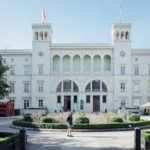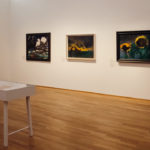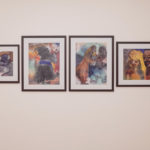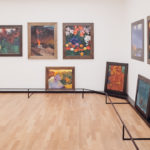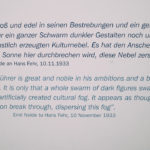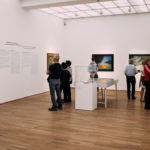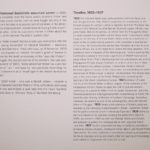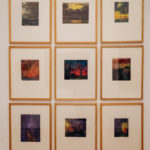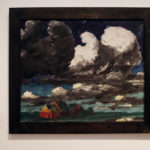The question is probably as old as the world: can you separate the artist from his oeuvre? The exhibition about Emil Nolde at the Hamburger Bahnhof Museum in Berlin is destined for controversy. You see, Emil Nolde was an extremely talented painter, but he was also a Nazi. Yes, I don’t want it to sound milder; if I said that Emil Nolde was a sympathizer of National Socialism, it sounds less intense. But the truth is that he was a Nazi.
I’m not an art critic. I do, however, appreciate art, and I like to visit museums and galleries whenever I have time. The exhibition that takes place at Berlin’s Hamburger Bahnhof is called “Emil Nolde – A German Legend. The Artist during the Nazi Regime” (in German: Emil Nolde – Eine Deutsche Legende. Der Künstler im Nationalsozialismus). It actually has the essence of a retrospective due to the high volume of paintings. There are over 100 original paintings by Emil Nolde on show, some of them presented for the first time.
(At the end of this article, you can also see more photos from the exhibition. You can also see a few more photos here. All photos are taken with the Ricoh GR ii.)
Who was Emil Nolde

Emil Nolde (1867-1956) was a German-Danish painter. He was one of the early Expressionists and a member of Die Brücke, an influential art movement that impacted modern art. Nolde was also a pioneer, being one of the first to work his oil paintings in color. He used consistently vivid colors, and he is also famous for his reds and yellows.
Emil Nolde was also a member of the National Socialist German Workers’ Party, widely known as the Nazi Party. He was a dedicated believer in the Nazi ideology until the end of World War II. That’s also why I called him a Nazi (and probably a die-hard one) in the introduction of this post. Nolde had often expressed anti-semitic remarks, spoke negatively about Jewish painters, and thought that Expressionism was a purely Germanic painting style.
However, Hitler had no respect for modern art, and he always called it “degenerate art.” Although Nolde had quite some reputation in Germany, the Nazi Party condemned his art. He saw more than 1,000 of his works removed from museums. From 1941 on, Emil Nolde was not allowed to paint, not even in private.
What’s on display at Hamburger Bahnhof
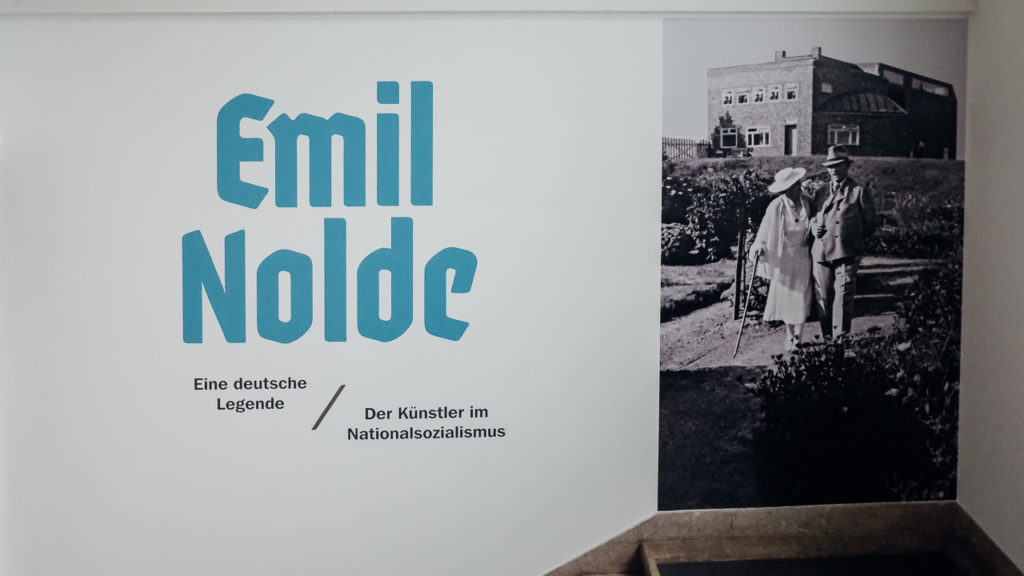
The Hamburger Bahnhof is one of the most influential museums in Berlin. The building that hosts the museum is an architectural gem itself, though: this was the former train station of the Hamburg-Berlin Railway. Several exhibitions take place every year, and one could even call it one of the city’s top art venues. The exhibition Emil Nolde – A German Legend. The Artist during the Nazi Regime deals with a broad spectrum of questions; however, I don’t think there were enough answers for some of them.
Among a large number of original paintings, the visitor will also see the so-called “Unpainted Pictures”: these are small-format watercolors that Nolde have secretly painted at Seebüll during his painting ban. Apart from that, there is also a lot of background information regarding Nolde’s art. Last but not least, one of the exhibition’s highlights is the reconstruction of the painting gallery in Nolde’s studio house in Seebüll.
There is a clear attempt to present as much historical data as possible because that’s the only way to present a controversial artist to the public. The visitor will discover Emil Nolde’s connection to the Nazi Party, info about his ostracism, and also how his reputation grew through the years.
My thoughts on the exhibition
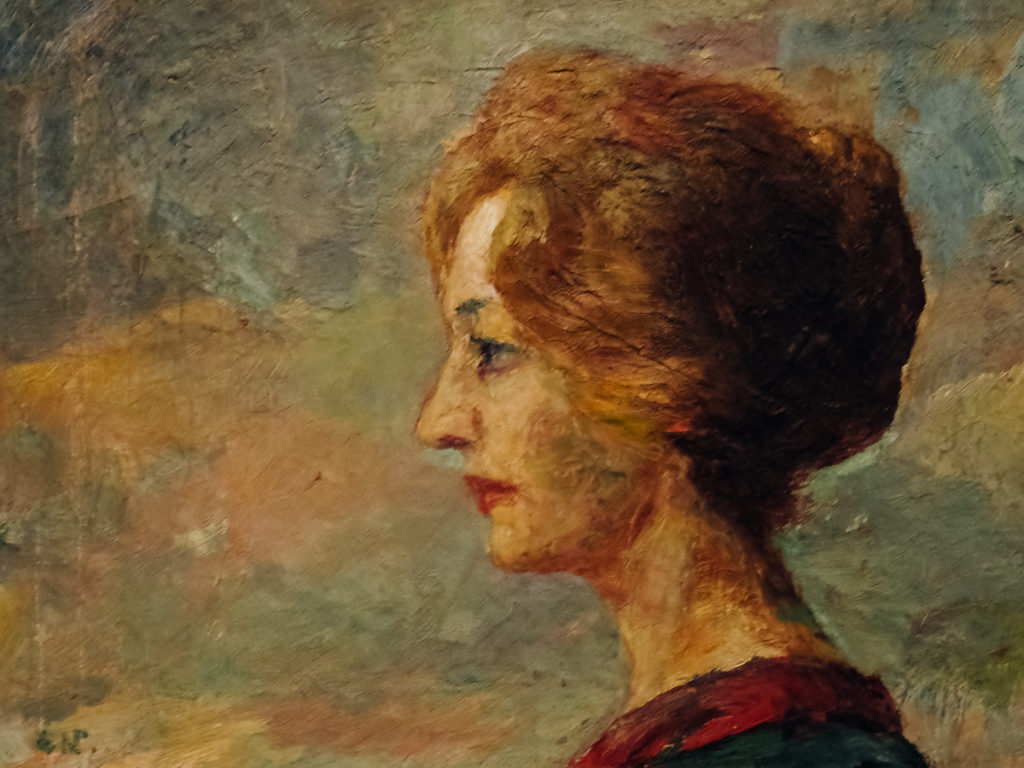
Emil Nolde was a very talented artist. His admiration for Van Gogh is also apparent when he deals with the topic of flowers. As one of the influential artists of the 20th century, Emil Nolde somehow deserved an extensive retrospective. The exhibition itself seems to be really packed, though. The “Unpainted Pictures” section seemed to be overwhelming. Of course, I understand the attempt: an artist that paints under a ban is usually a heroic figure. But still, it seemed too much sometimes, especially for a man connected to the Nazis.
I saw desire in Nolde’s paintings, but I also saw hate. This is an odd mixture, but it still explains Emil Nolde’s world and personality. Sometimes, the figures appear to be more of caricatures -but bright and vivid ones, so bright that they can even blind your judgment. I don’t know if this was Nolde’s way to hide his sentiments against specific population groups. What I do know, though, is that tenderness is usually absent: I only saw it in a portrait of his wife.
His beautiful landscape paintings bothered me, too. One can also detect some sort of pure vision and connection to the place behind the brilliant representation. That place is, of course, an idolization of the homeland, of the Heimat. The strong connection to the land and its values is usually transmitting a message of territorial predominance. But, once again, it’s not what Emil Nolde paints; it’s what he stands for.
That fact brought me eventually to the next point. And that point posed for me the most critical question. If you are German (or if you, like me, lived in Germany for several years), you have probably heard of Emil Nolde. This also means that you are well aware that he was a Nazi. But what will be the message transmitted to the non-German visitor of the Hamburger Bahnhof? What will be the takeaway point for the visitor that has no idea who Nolde was? Will they understand Nolde’s background and therefore have a clear overview of the oeuvre and the person behind it? So, in other words: did the exhibition inform the audience adequately or not?
My reply to this one is…almost. Sure, there is more than enough information written on the walls of the exhibition. There are also clear statements of Nolde’s antisemitism and his Nazi-regime support. For that fact, no one can say that there isn’t enough information for the audience. What I found a bit problematic, though, was that the information was not connected to Nolde’s work at all times. Yes, there are statements. But what is equally important is to deliver more explanations regarding the topics of the paintings. For an active, influential, and relatively mainstream museum, I found the exhibition’s approach to be a bit more academic than it should.
As I stated in the beginning, I’m not an art critic. But overall, I think that the exhibition deserves a visit. The controversy is always welcome, but I would like to see more background information instead of quotes. The way that some aspects of Emil Nolde’s oeuvre were presented left me a bit confused. There were times I thought that the museum somehow supported the separation between the artist and his oeuvre. But is this really possible?
Can you separate Emil Nolde from his Nazi beliefs?

For me, the answer is No.
I’m not somebody who thinks that artists should be an example for each one of us. On the contrary, artists, pretty much like every human being, have the right to choose their own path in life and live the way they want. But what is also true is that (again, like every other human being) they will be, consequently, judged for their actions.
Emil Nolde decided to be a Nazi for more than a quarter of a century. Therefore, the fact that he somehow suffered an artistic ban under the Nazis doesn’t purify him. That being said, I find the post-War attempt of Nolde’s heroization nonsensical. He embraced the Nazi ideology (if there is such a thing anyway because Nazism is not a worldview and therefore not an ideology) and decided to follow it until the end.
So, can you appreciate Emil Nolde’s paintings? Probably yes. But can you even find beauty in them? Yes, although it’s not usually a typical kind of beauty. But you can never separate an artist from his oeuvre. In the case of Emil Nolde, we are not talking about an isolated case of bad behavior towards, for instance, a friend or his wife. We are talking about the support of an artist to an atrocious semi-ideology that resulted in cruelties, brutality, barbarism, and millions of murdered Jews.
Practical information
The exhibition “Emil Nolde – A German Legend. The Artist during the Nazi Regime” (in German: Emil Nolde – Eine Deutsche Legende. Der Künstler im Nationalsozialismus) runs until the 15th of September 2019. Due to high demand, single admission tickets for the Emil Nolde exhibition are sold as timed tickets (available online and at cash registers). I went on a Saturday, but I then saw a sign announcing a sold-out for the day. Hence, I had to buy a ticket for one of the following days. The day I visited the exhibition, the sold-out sign was also there.
So, plan your visit and better buy a ticket either online or in advance. The ticket for the Emil Nolde exhibition costs 8 euros (reduced 4 euros). If you, however, arrive without a ticket, be prepared for a long queue.
The Hamburger Bahnhof Museum remains closed on Mondays. It is open from Tuesday to Friday from 10:00 until 18:00 and also during the weekends between 11:00 and 18:00.
The easiest way to reach the Hamburger Bahnhof is by S-Bahn. You do, however, have options with the bus, metro, and tram. The closest stop is Hauptbahnhof (Central Station), and from there, it’s less than 5 minutes walk. You can find more information about the current exhibitions by visiting the website of the Hamburger Bahnhof.
More articles about Berlin: “Faith” Exhibition, Polaroids by Linda McCartney, The Ultimate Berlinale Guide & The women of Bleibtreustrasse
*Get my FREE Travel Writing Course*
Buy the camera I use | Book your hotel
Pin it for later
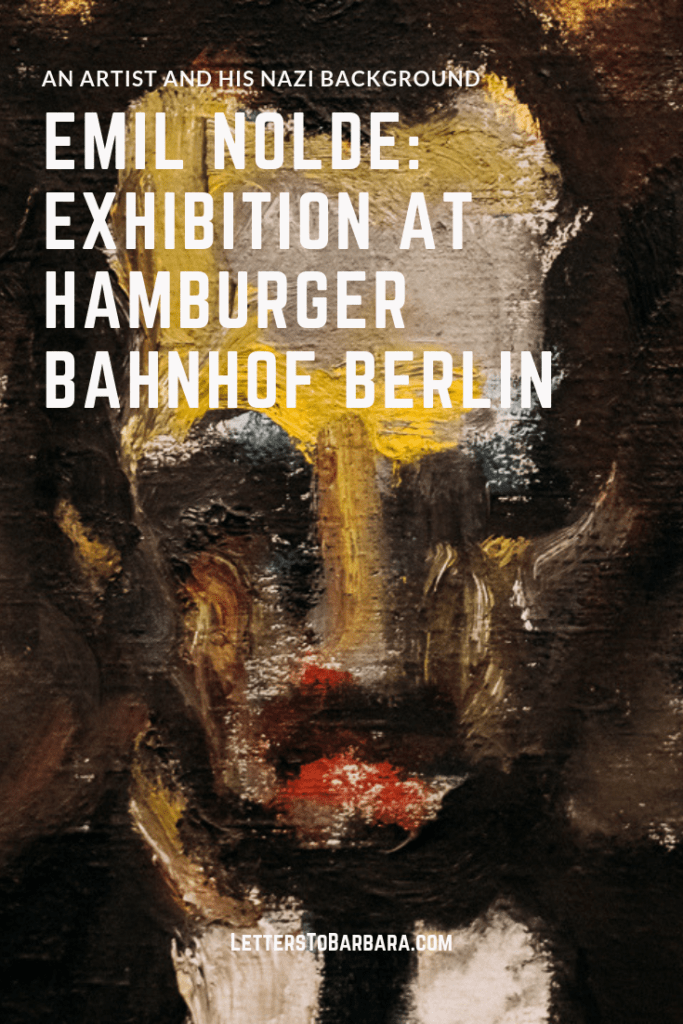
Please share, tweet, and pin if you enjoyed reading the Emil Nolde exhibition at Hamburger Bahnhof article. Your support keeps this website running and all the info up-to-date. 🙂
Last Updated on November 20, 2021 by George Pavlopoulos

